- Home
- Ramachandra Guha
India After Gandhi Revised and Updated Edition Page 2
India After Gandhi Revised and Updated Edition Read online
Page 2
In Strachey’s view, the differences between the countries of Europe were much smaller than those between the ‘countries’ of India. ‘Scotland is more like Spain than Bengal is like the Punjab.’ In India the diversities of race, language and religion were far greater. Unlike in Europe, these ‘countries’ were not nations; they did not have a distinct political or social identity. This, Strachey told his Cambridge audience, ‘is the first and most essential thing to learn about India – that there is not, and never was an India, or even any country of India possessing, according to any European ideas, any sort of unity, physical, political, social or religious’.
There was no Indian nation or country in the past; nor would there be one in the future. Strachey thought it ‘conceivable that national sympathies may arise in particular Indian countries’, but ‘that they should ever extend to India generally, that men of the Punjab, Bengal, the North-western Provinces, and Madras, should ever feel that they belong to one Indian nation, is impossible. You might with as much reason and probability look forward to a time when a single nation will have taken the place of the various nations of Europe.’3
Strachey’s remarks were intended as a historical judgement. At the time, new nations were vigorously identifying themselves within Europe on the basis of a shared language or territory, whereas none of the countries that he knew in India had displayed a comparable national awakening. But we might also read them as a political exhortation, intended to stiffen the will of those in his audience who would end up in the service of the Raj. For the rise of every new ‘nation’ in India would mean a corresponding diminution in the power and prestige of Empire.
Ironically, even as he spoke Strachey’s verdict was being disputed by a group of Indians. These had set up the Indian National Congress, a representative body that asked for a greater say for natives in the running of their affairs. As the name suggests, this body wished to unite Indians across the divisions of culture, territory, religion, and language, thus to construct what the colonialist thought inconceivable – namely, a single Indian nation.
Very many good books have been written on the growth of the Indian National Congress, on its move from debating club through mass movement to political party, on the part played by leaders such as Gokhale, Tilak and (above all) Gandhi in this progression. Attention has been paid to the building of bridges between linguistic communities, religious groupings and castes. These attempts were not wholly successful, for low castes and especially Muslims were never completely convinced of the Congress’s claims to be a truly ‘national’ party. Thus it was that when political independence finally came in 1947 it came not to one nation, but two – India and Pakistan.
This is not the place to rehearse the history of Indian nationalism.4 I need only note that from the time the Congress was formed right up to when India was made free – and divided – there were sceptics who thought that Indian nationalism was not a natural phenomenon at all. There were, of course, British politicians and thinkers who welcomed Indian self-rule and, in their own way, aided its coming into being. (One of the prime movers of the Indian National Congress was a colonial official of Scottish parentage, A. O. Hume.) Yet there were many others who argued that, unlike France or Germany or Italy, there was here no national essence, no glue to bind the people and take them purposively forward. From this perspective stemmed the claim that it was only British rule that held India and the Indians together.
Among those who endorsed John Strachey’s view that there could never be an independent Indian nation were writers both famous and obscure. Prominent in the first category was Rudyard Kipling, who had spent his formative years in – and was to write some of his finest stories about – the subcontinent. In November 1891 Kipling visited Australia, where a journalist asked him about the ‘possibility of self-government in India’. ‘Oh no!’ he answered: ‘They are 4,000 years old out there, much too old to learn that business. Law and order is what they want and we are there to give it to them and we give it them straight.’5
Where Kipling laid emphasis on the antiquity of the Indian civilization, other colonialists stressed the immaturity of the Indian mind to reach the same conclusion: namely, that Indians could not govern themselves. A cricketer and tea planter insisted, after forty years there, that
[c]haos would prevail in India if we were ever so foolish to leave the natives to run their own show. Ye gods! What a salad of confusion, of bungle, of mismanagement, and far worse, would be the instant result.
These grand people will go anywhere and do anything if led by us.
Themselves they are still infants as regards governing or statesmanship. And their so-called leaders are the worst of the lot.6
Views such as these were widely prevalent among the British in India, and among the British at home as well. Politically speaking, the most important of these ‘Stracheyans’ was undoubtedly Winston Churchill. In the 1940s, with Indian independence manifestly round the corner, Churchill grumbled that he had not become the King’s first minister in order to preside over the liquidation of the British Empire.
A decade previously he had tried to rebuild a fading political career on the plank of opposing self-government for Indians. After Gandhi’s ‘salt satyagraha’ of 1930 in protest against taxes on salt, the British government began speaking with Indian nationalists about the possibility of granting the colony dominion status. This was vaguely defined, with no timetable set for its realization. Even so, Churchill called the idea ‘not only fantastic in itself but criminally mischievous in its effects’. Since Indians were not fit for self-government, it was necessary to marshal ‘the sober and resolute forces of the British Empire’ to stall any such possibility.
In 1930 and 1931 Churchill delivered numerous speeches designed to work up, in most unsober form, the constituency opposed to independence for India. Speaking to an audience at the City of London in December 1930, he claimed that if the British left the subcontinent, then ‘an army of white janissaries, officered if necessary from Germany, will be hired to secure the armed ascendancy of the Hindu’. Three months later, speaking at the Albert Hall on ‘Our Duty to India’ – with his kinsman the Duke of Marlborough presiding – Churchill argued that ‘to abandon India to the rule of the Brahmins [who in his opinion dominated the Congress Party] would be an act of cruel and wicked negligence’. If the British left, he predicted, then the entire gamut of public services created by them – the judicial, medical, railway and public works departments – would perish, and ‘India will fall back quite rapidly through the centuries into the barbarism and privations of the Middle Ages’.7
III
A decade and a half after Winston Churchill issued these warnings, the British left India. A time of barbarism and privation did ensue, the blame for which remains a matter of much dispute. But then some sort of order was restored. No Germans were necessary to keep the peace. Hindu ascendancy, such as it was, was maintained not by force of arms but through regular elections based on universal adult franchise.
Yet, throughout the sixty years since India became independent, there has been speculation about how long it would stay united, or maintain the institutions and processes of democracy. With every death of a prime minister has been predicted the replacement of democracy by military rule; after every failure of the monsoon there has been anticipated countrywide famine; in every new secessionist movement has been seen the disappearance of India as a single entity.
Among these doomsayers there have been many Western writers who, after 1947, were as likely to be American as British. Notably, India’s existence has been a puzzle not just to casual observers or commonsensical journalists; it has also been an anomaly for academic political science, according to whose axioms cultural heterogeneity and poverty do not make a nation, still less a democratic one. That India ‘could sustain democratic institutions seems, on the face of it, highly improbable’, wrote the distinguished political scientist Robert Dahl, adding: ‘It lacks all the favourable condi
tions.’ ‘India has a well-established reputation for violating social scientific generalizations’, wrote another American scholar, adding: ‘Nonetheless, the findings of this article furnish grounds for skepticism regarding the viability of democracy in India.’8
The pages of this book are peppered with forecasts of India’s imminent dissolution, or of its descent into anarchy or authoritarian rule. Here, let me quote only a prediction by a sympathetic visitor, the British journalist Don Taylor. Writing in 1969, by which time India had stayed united for two decades and gone through four general elections, Taylor yet thought that
the key question remains: can India remain in one piece – or will it fragment? . . . When one looks at this vast country and its 524 million people, the 15 major languages in use, the conflicting religions, the many races, it seems incredible that one nation could ever emerge.
It is difficult to even encompass this country in the mind – the great Himalaya, the wide Indo-Gangetic plain burnt by the sun and savaged by the fierce monsoon rains, the green flooded delta of the east, the great cities like Calcutta, Bombay and Madras. It does not, often, seem like one country. And yet there is a resilience about India which seems an assurance of survival. There is something which can only be described as an Indian spirit.
I believe it no exaggeration to say that the fate of Asia hangs on its survival.9
The heart hoped that India would survive, but the head worried that it wouldn’t. The place was too complicated, too confusing – a nation, one might say, that was unnatural.
In truth, ever since the country was formed there have also been many Indians who have seen the survival of India as being on the line, some (the patriots) speaking or writing in fear, others (the secessionists or revolutionaries) with anticipation. Like their foreign counterparts, they have come to believe that this place is far too diverse to persist as a nation, and much too poor to endure as a democracy.
IV
In the last decade of the last century I became a resident of Ghalib’s native city. I lived, however, not in the old walled town where his family haveli, or mansion, still stands, but in New Delhi, built as an imperial capital by the British. As in the poet’s day, Indian was fighting Indian. On my way to work I had to pass through Rajpath (formerly Kingsway), the road whose name and location signal the exercise of state power. For about a mile, Rajpath runs along flat land; on either side are spacious grounds meant to accommodate the thousands of spectators who come for the annual Republic Day parade. The road then ascends a hill and reaches the majestic sandstone buildings known as the North and South Blocks, which house the offices of the Government of India. The road ends in the great house where the Viceroy of British India once lived.
By the time I moved to New Delhi the British had long departed. India was now a free and sovereign republic. But not, it seemed, an altogether happy one. The signs of discord were everywhere. Notably on Rajpath, where the grounds meant to be empty except on ceremonial days had become a village of tents, each with colourful placards hung outside it. One tent might be inhabited by peasants from the Uttarakhand Himalaya, seeking a separate province; a second by farmers from Maharashtra, fighting for a higher price for their produce; a third by residents of the southern Konkan coast, urging that their language be given official recognition by inclusion in the Eighth Schedule of the Constitution of India.
The people within these tents and the causes they upheld were ever changing. The hill peasants might be replaced by industrial workers protesting retrenchment; the Maharashtra farmers by Tibetan refugees asking for Indian citizenship; the Konkani speakers by Hindu monks demanding a ban on cow slaughter.
In the early nineties, these tents were summarily dismantled by a government worried about the impression made on foreign visitors by such open expression of dissent. Rajpath was vacated of encroachments and the lawns restored to their former glory. But the protesters regrouped, and relocated. They now placed themselves a mile to the north-west, next to the Jantar Mantar observatory in Connaught Place. Here they were away from the eyes of the state, but directly in view of the citizens who daily passed through this busy shopping district. In 1998 the police decided this would not do either. The shanties were once again demolished, but, as a newspaper report had it, ‘as far as the authorities are concerned, only the venue has changed – the problem persists. The squatters are merely to be shifted to an empty plot at the Mandir Marg–Shankar Road crossing, where they are likely to draw less attention.’10
When I lived in Delhi, in the 1990s, I wished I had the time to walk on Rajpath every day from the first of January to the thirty-first of December, chronicling the appearance and disappearance of the tents and their residents. That would be the story of India as told from a single street, and in a single year. The book that is now in your hands follows a different method. Its narrative extends over six decades, from 1947 to the present. However, like the book that I once intended to write – based on a year spent walking up and down Rajpath – this too is a story, above all, of social conflicts, of how these arise, how they are expressed, and how their resolution is sought.
These conflicts run along many axes, among which we may – for the moment – single out four as pre-eminent. First, there is caste, a principal identity for many Indians, defining whom they might marry, associate with and fight against. ‘Caste’ is a Portuguese word that conflates two Indian words: jati, the endogamous group one is born into, and varna, the place that group occupies in the system of social stratification mandated by Hindu scripture. There are four varnas, with the former ‘Untouchables’ constituting a fifth (and lowest) strata. Into these varnas fit the 3,000 and more jatis, each challenging those, in the same region, that are ranked above it, and being in turn challenged by those below.
Then there is language. The Constitution of India recognizes twenty-two languages as ‘official’. The most important of these is Hindi, which in one form or another is spoken by upwards of 400 million people. Others include Telugu, Kannada, Tamil, Malayalam, Marathi, Gujarati, Oriya, Punjabi, Bengali and Assamese, each of which is written in a distinct script and boasts many millions of native speakers. Naturally, national unity and linguistic diversity have not always been seen to be compatible. Indians speaking one tongue have fought with Indians who speak another.
A third axis of conflict is religion. A vast majority of the billion-plus Indians are Hindus. But India also has the second largest population of Muslims in the world – about 140 million (only Indonesia has more). In addition there are substantial communities of Christians, Sikhs, Buddhists and Jains. Since faith is as fundamental a feature of human identity as language, it should scarcely be a surprise that Indians worshipping one variation of God have sometimes quarrelled with Indians worshipping another.
The fourth major axis of conflict is class. India is a land of unparalleled cultural diversity but also, less appealingly, of massive social disparities. There are Indian entrepreneurs who are fabulously wealthy, owning huge homes in London and New York. Yet fully 26 per cent of the country’s population, about 300 million individuals, are said to live below the official poverty line. In the countryside there are deep inequalities in landholding; in the city, wide divergences in income. Not unexpectedly, these asymmetries have fuelled many movements of opposition.
These axes of conflict operate both singly and in tandem. Sometimes a group professing a particular faith also speaks a separate language. Often the low castes are the subordinate classes as well. And to these four central axes one should perhaps add a fifth that cuts right across them: that of gender. Here, again, India offers the starkest contrasts. A woman served as prime minister for a full fifteen years, yet in some parts of India female infanticide is still very common. Landless labourers are paid meagre wages, the women among them the lowest of all. Low castes face social stigma, the women among them most of all. And the holy men of each religion tend to assign their women an inferior position in both this world and the next. As an axis of discri
mination, gender is even more pervasive than the others, although it has not so often expressed itself in open and collective protest.
As a laboratory of social conflict the India of the twentieth century is – for the historian – at least as interesting as the Europe of the nineteenth. In both the conflicts were produced by the conjunction of two truly transformative processes of social change: industrialization and the making of modern nation-states. In India the scope for contention has been even greater, given the diversity of competing groups across religion, caste, class and language. Conflicts are also more visible in the subcontinent since, unlike nineteenth-century Europe, contemporary India is a democracy based on adult suffrage, with a free press and a largely independent judiciary. At no other time or place in human history have social conflicts been so richly diverse, so vigorously articulated, so eloquently manifest in art and literature, or addressed with such directness by the political system and the media.
One way of summarizing the history of independent India – and the contents of this book – would be through a series of ‘conflict maps’. One might draw a map of India for each decade, with the conflicts then prevalent marked in various colours depending on their intensity: blue for those that democratically advance the interests of a particular group; red for those that more aggressively, yet still non-violently, ask for a major change in the law; black for those that seek the destruction of the Indian state by armed insurrection.
Reading these maps chronologically, one would find major variations across the decades, with red areas becoming black, black areas becoming red, and blue and red areas becoming white, that being the colour of those parts of India where there appears to be no major conflict at all. These maps would present a vivid kaleidoscope of changing colours. But amid all the changes the discerning observer would also notice that two things remain constant. The first is that the shape of the map does not change through all its iterations. This is because no part of India has successfully left India. The second is that at no time do the blue, red and black areas, taken together, anywhere approximate the extent of the white areas of the map. Even in what were once known as its ‘dangerous decades’, much more than 50 per cent of India was comfortably at peace with itself.

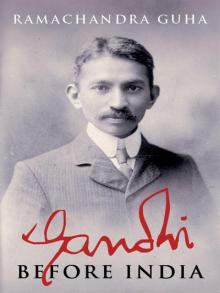 Gandhi Before India
Gandhi Before India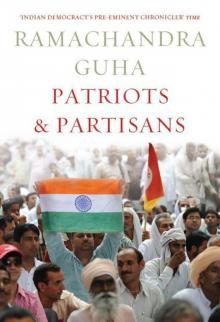 Patriots & Partisans
Patriots & Partisans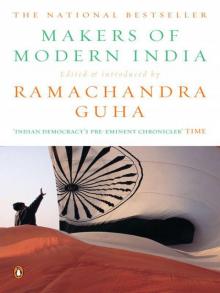 Makers of Modern India
Makers of Modern India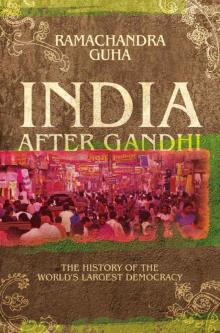 India After Gandhi: The History of the World's Largest Democracy
India After Gandhi: The History of the World's Largest Democracy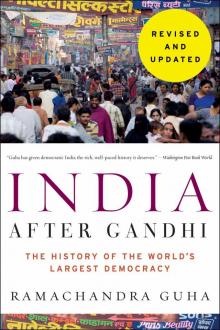 India After Gandhi Revised and Updated Edition
India After Gandhi Revised and Updated Edition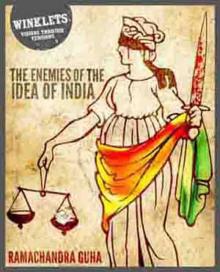 The Enemies of the Idea of India
The Enemies of the Idea of India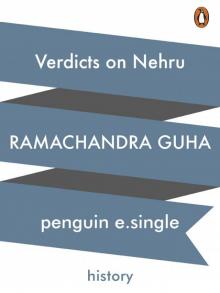 Verdicts on Nehru
Verdicts on Nehru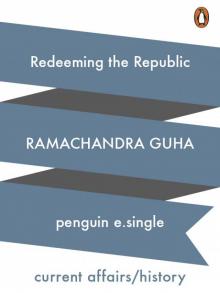 Redeeming the Republic
Redeeming the Republic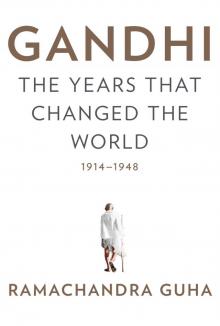 Gandhi
Gandhi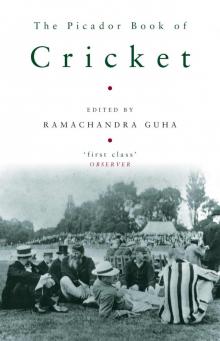 The Picador Book of Cricket
The Picador Book of Cricket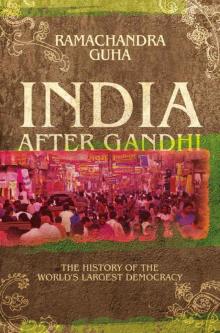 India After Gandhi
India After Gandhi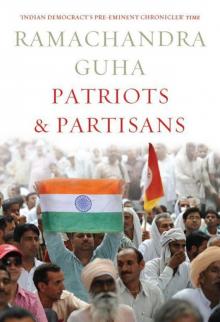 Patriots and Partisans: From Nehru to Hindutva and Beyond
Patriots and Partisans: From Nehru to Hindutva and Beyond